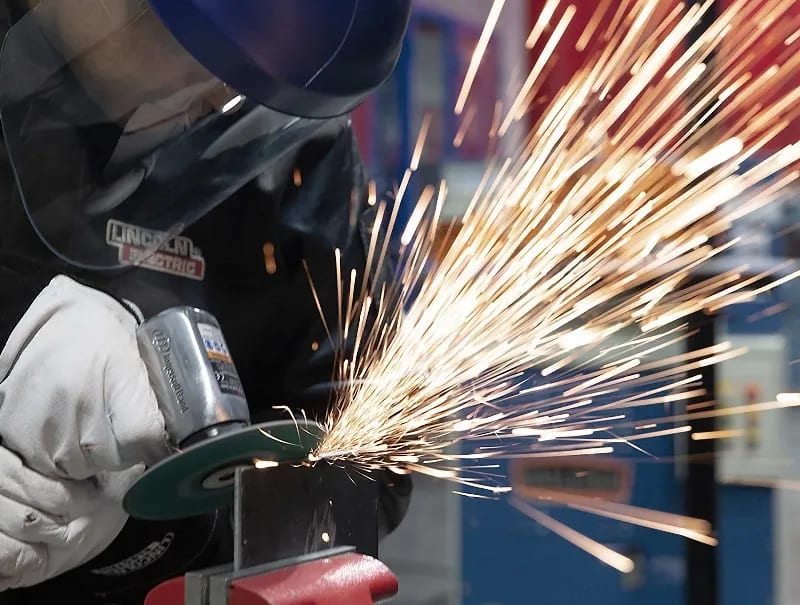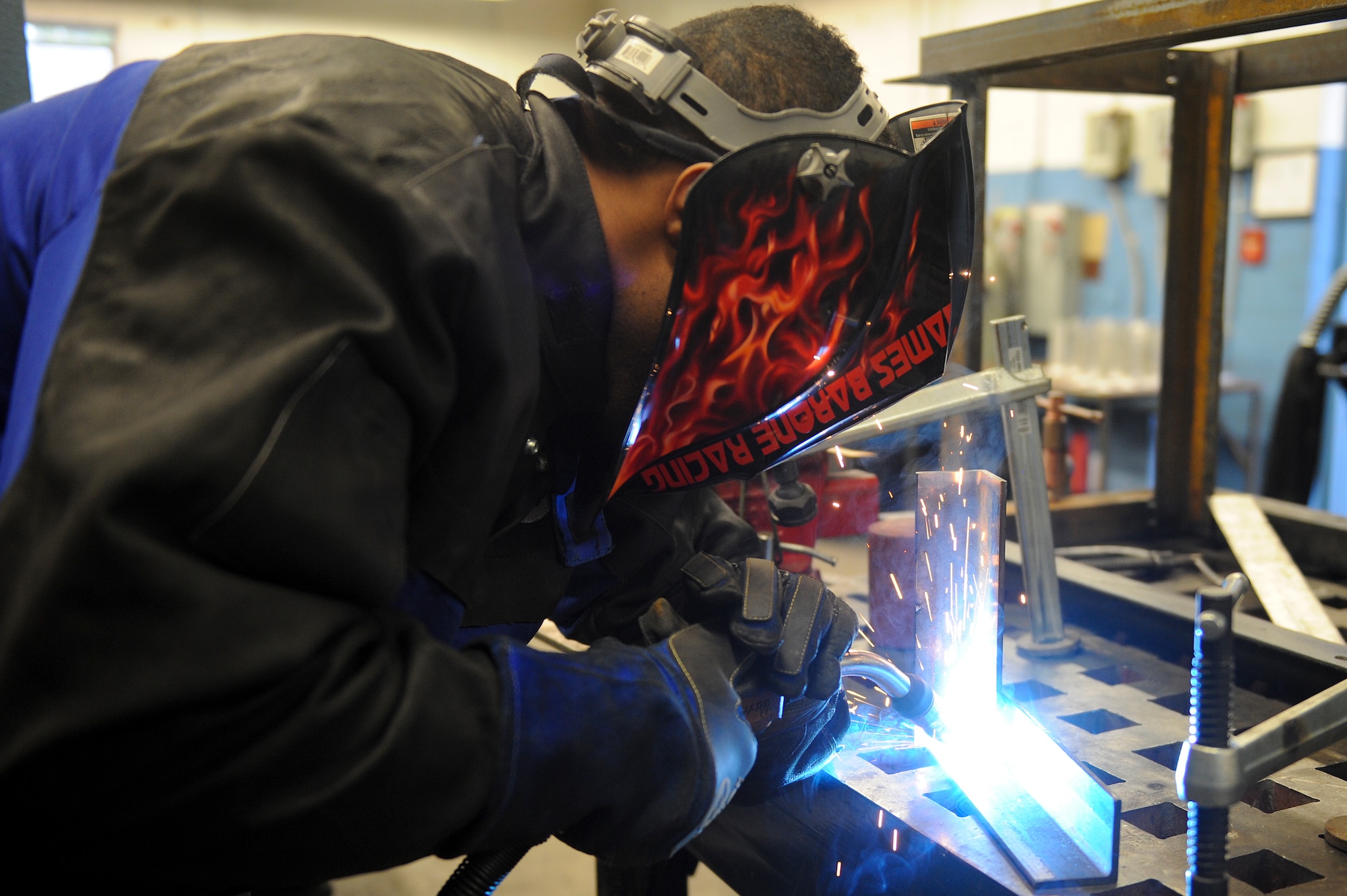Common Welding Repair Service Issues and Just How to Address Them Effectively
Welding repairs typically come across a variety of problems that can jeopardize the integrity of the end product. Usual problems consist of inadequate infiltration, porosity, and misalignment, to name a few. Each issue presents special difficulties that require particular approaches for resolution. Understanding these concerns is crucial for welders aiming to boost their abilities and results. This discussion will discover these common welding fixing concerns and reliable methods to resolve them.
Inadequate Infiltration
Poor penetration occurs when the weld steel falls short to fully fuse with the base material, resulting in weak joints and potential architectural failures. This issue frequently stems from insufficient heat input, incorrect electrode angle, or improper welding speed. Welders may come across poor infiltration due to a miscalculation of the necessary parameters for a certain product thickness or kind. Additionally, contamination on the base material's surface can hinder efficient bonding, intensifying the trouble. To resolve poor penetration, welders need to assure proper setups on their tools and keep a clean work surface. Normal inspection of welds is advised to identify any deficiencies early, allowing for timely improvements and the avoidance of compromised architectural stability in bonded settings up.
Porosity
Porosity is a typical problem in bonded joints that shows up as tiny gas bubbles caught within the weld metal. This defect can endanger the stability of the weld, leading to decreased strength and potential failure under tension. Belgrade Welding. Porosity commonly occurs from contamination, moisture, or improper welding strategies, which permit gases to get away into the liquified weld swimming pool. To resolve porosity, welders should assure correct surface area preparation, preserve a tidy workplace, and use suitable welding specifications. Furthermore, choosing the right filler product and protecting gas can mitigate gas entrapment. Normal evaluation and screening of welds can help identify porosity early, guaranteeing timely rehabilitative activities are taken, thereby maintaining the quality and integrity of the welded structure
Misalignment
Misalignment in welding can emerge from numerous factors, consisting of inappropriate configuration and thermal growth. Comprehending the origin is crucial for reliable resolution. Several adjustment strategies are offered to realign parts and guarantee structural stability.
Reasons for Imbalance
Welding imbalance usually originates from a selection of underlying problems that can compromise structural stability. One key cause is inappropriate fit-up of parts before welding, which can bring about spaces and irregular surfaces. Variants in thermal expansion throughout the welding process can additionally lead to distortion, specifically if the materials being joined have various coefficients of growth. Furthermore, insufficient clamping and fixturing may fall short to hold elements firmly in place, leading to activity throughout welding. Inadequately maintained equipment, consisting of welding equipments and tools, might present incongruities in the weld bead, further adding to misalignment. Driver mistake, stemming from not enough training or experience, can additionally play a considerable duty in creating misaligned welds.

Modification Techniques Readily Available
Resolving imbalance properly requires a mix of corrective methods tailored to the specific concerns handy. One common technique is making use of components or jigs to hold elements in the appropriate setting throughout welding, making certain consistent placement. Furthermore, pre-heating the materials can help lower distortion and improve fit-up. For significant imbalance, mechanical realignment methods, such as making use of hydraulic jacks or clamps, can be employed to deal with the placement before welding. Post-weld warm treatment might also be required to soothe tensions brought on by misalignment. Cautious examination and modification throughout the configuration stage can prevent misalignment concerns from coming to be considerable problems, advertising a smoother welding procedure and boosting general architectural integrity.
Distortion
Distortion is a common challenge in welding that can arise from various aspects, consisting of irregular cooling and heating. Comprehending the reasons for distortion is crucial for implementing effective prevention methods. Resolving this concern not just boosts structural integrity however additionally enhances the overall quality of the weld.
Reasons for Distortion
When based on the extreme warmth of welding, products typically undertake adjustments that can lead to distortion. This sensation largely develops from thermal development and tightening during the welding process. As the weld area warms up, the material expands; upon air conditioning, it acquires, which can create interior anxieties. Furthermore, unequal home heating throughout a work surface can exacerbate these stresses, leading to bending or bending. The sort of material additionally plays a significant duty; steels with differing thermal conductivity and coefficients of development may react differently, bring about unforeseeable distortions. Inadequate joint style and insufficient fixturing can add to imbalance during welding, enhancing the probability of distortion. Recognizing these reasons is important for effective welding repair and prevention strategies.
Prevention Techniques
Effective prevention strategies for distortion throughout welding focus on managing heat input and guaranteeing proper joint design. Preserving a consistent warmth input aids to lessen thermal development and tightening, which can lead to distortion. Making use of methods such as pre-heating the work surface read this can also reduce the temperature level gradient, advertising uniform home heating. Furthermore, choosing ideal joint styles, such as T-joints or lap joints, can enhance stability and decrease anxiety focus. Implementing appropriate fixturing to secure the workpieces in position further aids in maintaining positioning during the welding procedure. Finally, staggered welding series can distribute warmth extra evenly, protecting against local distortion. By using these strategies, welders can greatly decrease the possibility of distortion and enhance the overall high quality of their welds.
Splitting
Cracking is a typical concern run into in welding fixings, commonly arising from different elements such as improper air conditioning rates, material option, or inadequate joint prep work. The event of splits can substantially compromise the stability of the weld, leading to potential failures during operation. To address this issue, welders should first examine the origin, ensuring that materials are compatible and properly chosen for the certain application. Furthermore, managing the cooling rate throughout the welding procedure is crucial; quick air conditioning can induce stress and anxiety and bring about fracturing. Correct joint design and preparation also add to decreasing the danger. Executing these techniques can enhance weld high quality and sturdiness, eventually decreasing the possibility of breaking in finished weldments.

Insufficient Combination
A significant problem in welding repair services is incomplete fusion, which happens when the weld metal does not appropriately bond with the base product or previous weld passes - Belgrade. This problem can result in weak points in the joint, possibly jeopardizing the find out integrity of the welded framework. Variables adding to insufficient fusion consist of insufficient warmth input, inappropriate welding method, and contamination of the surface areas being joined. To address this problem efficiently, welders ought to assure correct pre-weld cleansing and surface area preparation, in addition to change their welding parameters to achieve appropriate penetration and combination. Regular inspection throughout the welding process can additionally aid recognize incomplete fusion early, enabling timely restorative actions to enhance the general high quality of the weld
Overheating
While welding repair services can improve structural integrity, overheating provides a considerable challenge that can result in material deterioration. Excessive warm throughout welding can change the mechanical residential or commercial properties of steels, causing decreased strength, raised brittleness, and bending. This phenomenon is specifically important in high-stress applications where structural integrity is extremely important. Determining getting too hot can involve aesthetic assessments for discoloration or distortion, along with keeping an eye on temperature during the welding process. To reduce the dangers linked with getting too hot, welders should utilize ideal methods, such as controlling warmth input, readjusting traveling speed, and using appropriate filler materials. Additionally, implementing pre- and post-weld heat therapies can help bring back material residential or commercial properties and boost the general quality of the fixing, making sure lasting efficiency and safety and security.
Frequently Asked Questions
What Are the Common Signs of a Welding Defect?

Just How Can I Check My Welds for Top quality?
To examine welds for top quality, one can use aesthetic examinations, ultrasonic testing, and radiographic techniques. Each strategy assures architectural honesty, determines problems, and verifies adherence to specified standards, inevitably boosting the integrity of the welding torches bonded joints.
What Security Safety Measures Should I Take While Welding?
When welding, one need to focus on safety and security by putting on ideal individual protective tools, making certain correct air flow, protecting flammable materials away, keeping a tidy office, and understanding environments to stop injuries and accidents.
Can I Fix a Weld Without Redesigning the Entire Joint?
Repairing a weld without redoing the entire joint is feasible, depending upon the damage (Montana Mobile Welding and Repair). Methods such as grinding, adding filler material, or using a welding procedure can successfully resolve particular flaws while maintaining the surrounding framework
What Equipment Are Necessary for Effective Welding Services?
Vital tools for reliable welding repair services consist of a welding equipment, cable brush, grinder, protective gear, clamps, and filler materials. Each device plays a crucial duty in making sure quality and safety during the fixing process. Porosity generally arises from contamination, wetness, or improper welding techniques, which enable gases to get away right into the molten weld pool. Poorly conserved equipment, including welding devices and devices, may introduce incongruities in the weld bead, additional adding to imbalance. When subjected to the intense heat of welding, products typically undertake modifications that can lead to distortion. Fracturing is an usual issue experienced in welding repairs, frequently resulting from numerous variables such as inappropriate air conditioning prices, material choice, or insufficient joint prep work. A significant concern in welding repair work is insufficient fusion, which happens when the weld steel does not effectively bond with the base product or previous weld passes.
Comments on “Ways to minimize distortion in Montana Mobile Welding and Repair Welding projects”